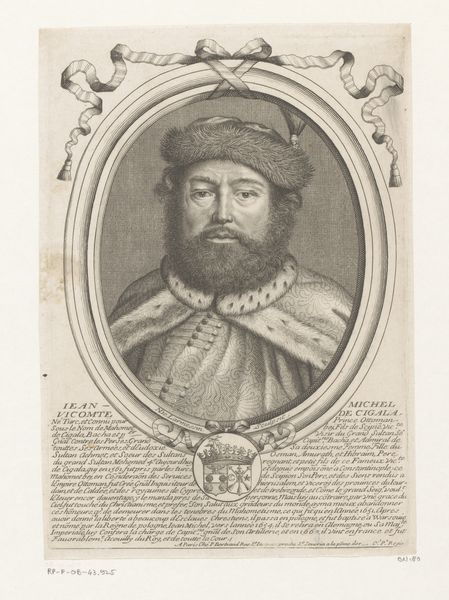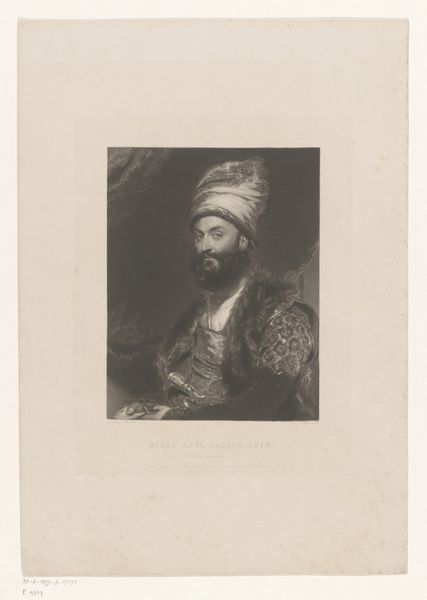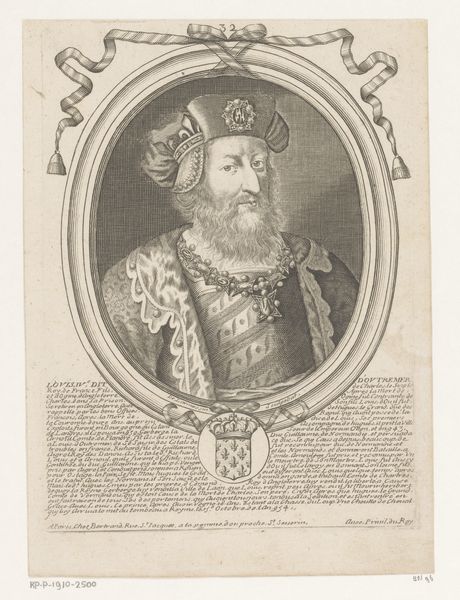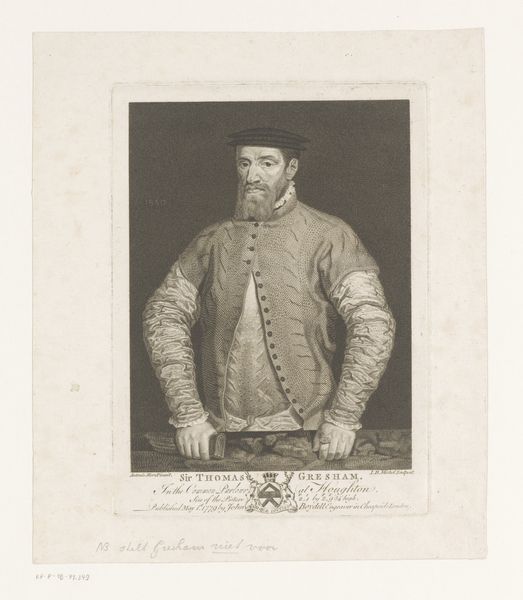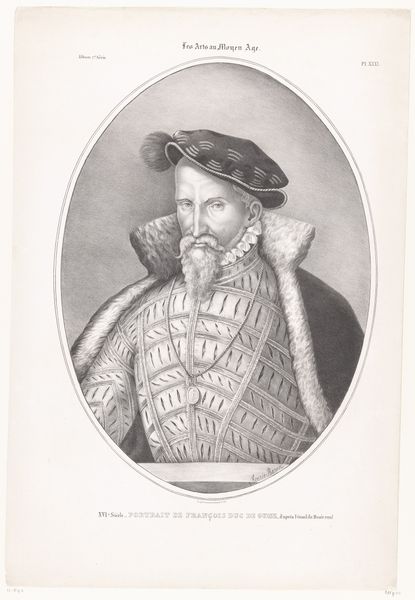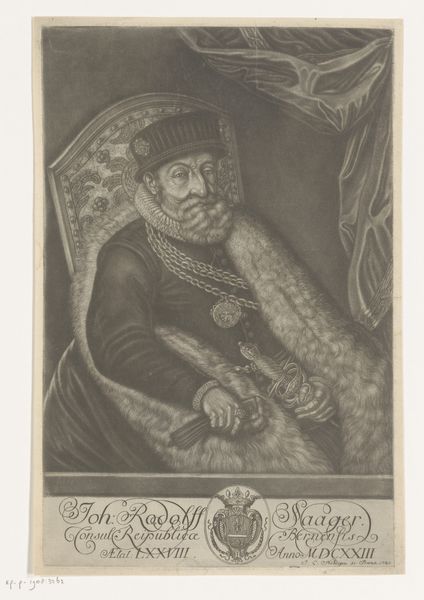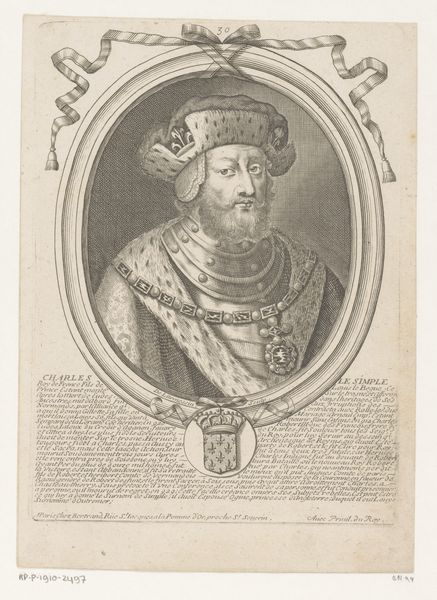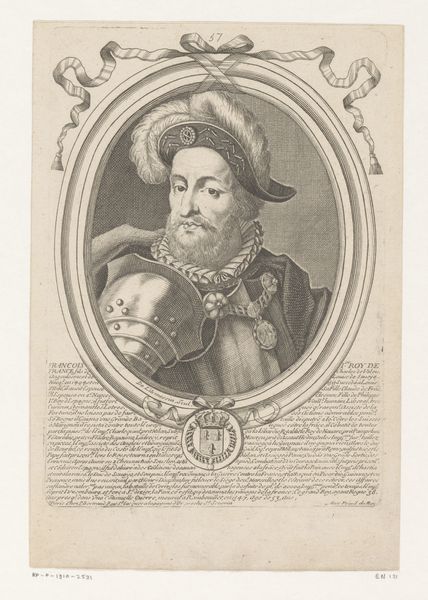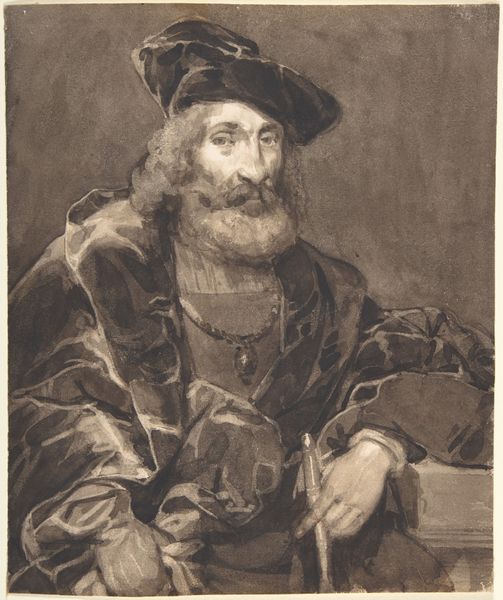
#
pencil drawn
#
photo restoration
#
old engraving style
#
charcoal drawing
#
historical photography
#
portrait reference
#
pencil drawing
#
old-timey
#
limited contrast and shading
#
19th century
Dimensions: height 504 mm, width 357 mm
Copyright: Rijks Museum: Open Domain
Curator: Immediately, the man’s direct gaze grabs me. There's a weight in his expression, an acknowledgement of his position perhaps? Editor: This piece, created around 1768, is a portrait by William Pether titled, rather enigmatically, "Portret van een onbekende man uit Venetië" - "Portrait of an Unknown Man from Venice." It’s a mezzotint, a printmaking technique achieving tonal gradations rather than lines. Curator: Mezzotint...so, thinking about process, it’s about building up tone, creating that velvety texture which absolutely lends itself to portraying fine fabrics like that impressive fur he’s sporting and the flamboyant plume in his very fancy hat. Editor: Precisely. The material itself influences the perception, right? It allows Pether to showcase details of status through costume—details of wealth like that decorative cord draped over his shoulder. Look, the very labor involved in producing that kind of print would have inherently elevated the sitter's position through the conspicuous consumption of the work itself. Curator: It makes you think who exactly he was, this unknown Venetian? I sense pride, sure, but also perhaps a little world-weariness in the set of his jaw and the faint furrow of his brow. I almost want to invent a narrative for him. Imagine, perhaps he’s a merchant prince wrestling with shifting trade winds... Editor: Perhaps, but it's equally important to acknowledge that these portraits circulated within very specific social networks. Printmaking allowed for broader dissemination of imagery reinforcing existing power structures by reproducing idealized versions of the elite for the consumption of other elites. The image itself *becomes* currency. Curator: That's absolutely right! We shouldn’t overlook the role of portraiture in building power in the eighteenth century. All that detail speaks volumes. So, thinking about it from both sides, how material can reinforce narrative and the other way around. Fascinating, really.
Comments
No comments
Be the first to comment and join the conversation on the ultimate creative platform.
